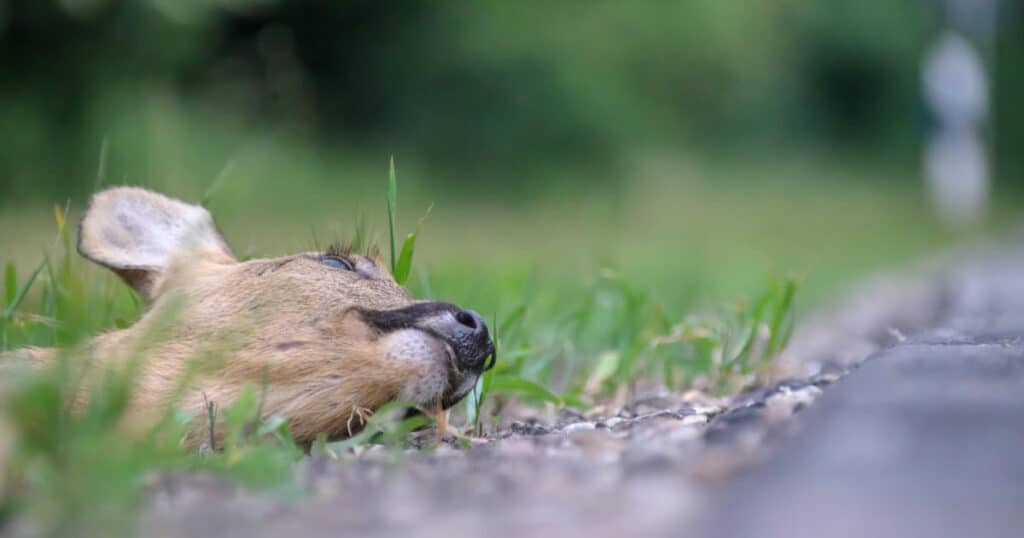It’s not uncommon to hit a deer in many states of the United States. In fact, collisions with deer happen frequently in areas with a lot of main roads located next to national parks or forests. It also happens in places where deer and humans live in close proximity, as deer habitat is destroyed. You’re probably wondering, is it illegal to hit a deer and drive off?
Many drivers wonder if there are any legal or moral obligations after a crash with a deer. Do you need to call local authorities?
It’s not illegal to hit a deer and drive off in most states in the United States, but there is one important exception to this. That exception is if another vehicle is involved in the collision. If this is the case, you must immediately contact the authorities to file a police report.
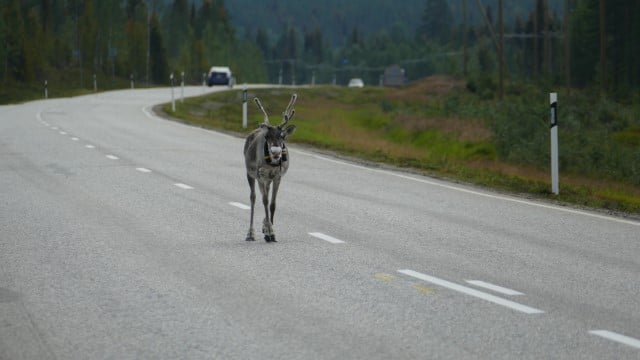
Each state has its own laws surrounding deer collisions, so you’ll want to check your local law for specifics.
Legal Responsibilities After Hitting A Deer With Your Car
You have the responsibility to be aware of your legal responsibilities when you hit a deer with your car. Depending on which state you are in, it may not be the best idea to drive off after hitting a deer.
If your vehicle has been damaged, you will often be required to file an accident or police report. This is necessary to be able to submit a claim to your insurance company.
It’s a good idea to take pictures of the scene. Also, make sure that the deer has been moved out of traffic before you leave the scene.
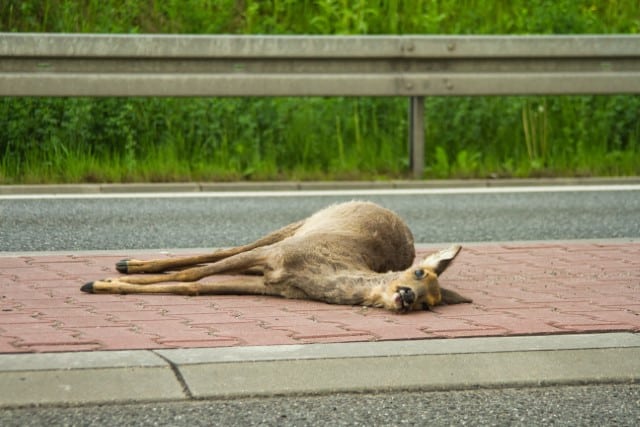
You may be liable if another car was involved in the collision. You will also be liable if there is evidence that you were driving recklessly at the time of the accident.
So, always make sure to check with local authorities if you have a deer collision.
If you don’t report the incident, you could be found legally liable. This could result in you paying for repairs not only for your own car but also for any other vehicles involved in the collision.
Additionally, in some states, you may be issued a fine for leaving the scene of an accident if you don’t report it.
Protect Yourself
To protect yourself, gather as much evidence as possible at the scene. Take pictures of the damage to your car, and contact law enforcement to file a police report.
This will provide the documentation you need for reporting the accident to your insurance company.
If you have a dash cam, this will be an advantage. You may want to get one if you drive in an area with many deer.
A dash cam can capture footage of the incident. This way you can prove what happened and have visual evidence if needed.
There is also the possibility that other road users may have captured the incident with their dashcams. If they’re nice enough to stop and help you out, you can ask them to send you footage.
Having footage of the event will be invaluable when you’re filing a police report and insurance claim.
It’s best to file a report even if the damage is minimal. It will ensure you protect yourself in case there is any legal liability. It may be inconvenient to do this, but it will give you peace of mind.
Dangers of Hitting a Deer
It can be very dangerous to have a collision with a deer. It’s not just a hazard for the deer but also for the driver and passengers in the car.
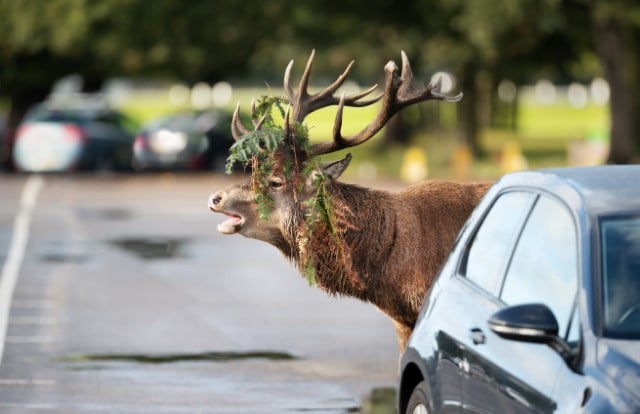
As deer are usually quite large, they can cause significant damage to your vehicle.
It is also dangerous to have a deer collision. If you hit a deer at high speed, it can result in your car spinning out of control or even rolling over.
That means that the driver and passengers are at risk of injury. The force of the impact could cause serious injury if you and the passengers are not properly restrained in their seats.
It goes without saying that the collision will also injure and possibly kill the deer. If the deer is seriously injured but doesn’t die instantly, it could suffer significantly.
Safety should always be your priority. Drive more slowly and carefully when traveling on roads where are known deer populations nearby.
If you get a deer collision, make sure that you assess your own well-being and that of your passengers. You should also check the damage to your vehicle.
Hitting a deer can also cause it to end up in the oncoming lane, where it can be hit by another car driving in the opposite direction.
Prevention is the best approach to accidents involving deer. Be aware of your surroundings and drive in accordance with the road conditions and keeping local wildlife in mind.
How Can Drivers Reduce The Risk of Deer Collisions?
Drivers can help reduce the risk of accidents with deer on the road by being aware and taking precautions.
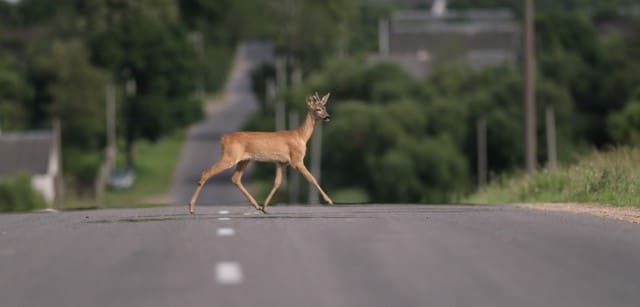
As I mentioned before, it is vital to slow down and exercise greater caution when you’re driving in an area with deer populations. This is especially crucial during dawn and dusk hours when hours are most active.
It goes without saying that you should always use headlights when driving at night. This will better illuminate the road and give you much more warning if there are deer in the vicinity.
This includes high beams when possible, as they can illuminate the sides of the road where deer may be standing.
Resist the urge to swerve if you spot an animal on or near the roadway, as this can make you lose control of your vehicle. Slow down and brake gently instead. This gives you more stopping distance between your vehicle and any potential animals.
Stay aware of your surroundings at all times for signs that you may be in an area with deer. Look out for deer crossing signs.
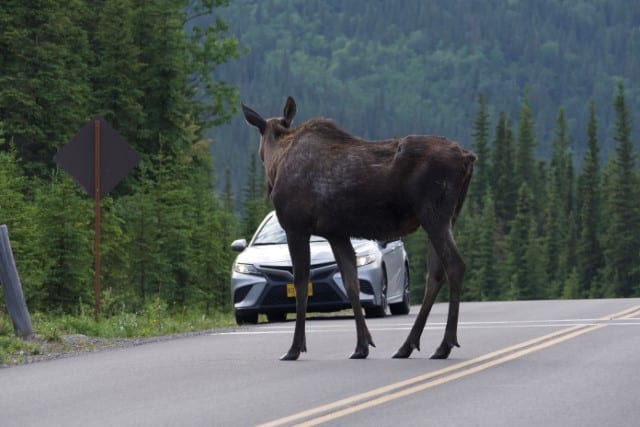
Avoid all distractions, such as cell phones. You can put on some music to help keep you optimally alert and aware.
If you do have a deer collision, remain calm. Assess the situation and contact the appropriate authorities as needed.
Why You Should Remain at the Scene of the Accident
In some situations, there is no harm in driving away after hitting a deer with your car. However, if the collision results in property damage or bodily injury to another person, you must not drive away without assessing the scene and reporting the incident to law enforcement.
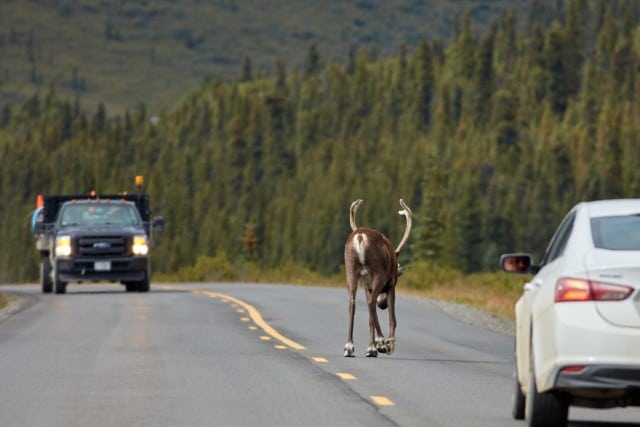
In many states, leaving the scene of an accident may be considered a criminal offence. It is against the law to leave before exchanging insurance information and filing a police report.
In addition to risking legal punishment, leaving without assessing the scene can also leave you liable for any damages caused by the accident.
Even if you don’t think that there is any damage, it’s important to check for hidden damage that may not be immediately visible. This might be structural damage to your vehicle or a cracked windshield.
Assessing the site of an accident means that you make sure that no one is injured and that your car is safe to drive. It will also provide evidence in case of any legal proceedings due to the accident.
If you hit a deer but your vehicle suffers minimal damage, the deer gets away without any serious injury, and no other vehicles were involved, you may be able to continue on your journey if you’re in a state that allows that.
No matter what the rules of your state, use your judgment and stay safe. You will keep yourself and your passengers safe and save time, money, and potential legal issues in the future.
Can Drivers Receive Compensation for a Damaged Vehicle?
If you have a deer collision, one of the first questions that will probably come to mind is whether or not the driver can seek any compensation the deer has caused.
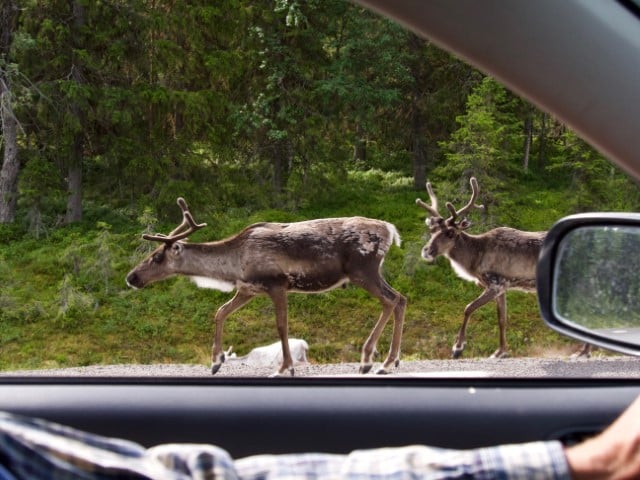
The answer to this question depends largely on the type of insurance you have. It will vary according to your specific policy and the individual’s insurance company’s terms and conditions.
In general, you will probably need to have comprehensive insurance in order to get any compensation to fix your vehicle after a deer collision.
Yes, comprehensive insurance can be quite expensive. However, it may be worth having if you live or regularly drive in an area with deer.
This is especially true if you have a smaller vehicle that may be more easily damaged. The deer is more likely to roll up the bonnet and smash the windscreen.
Even larger vehicles may end up with significant damage from hitting a deer.
If you try to swerve to avoid a deer and accidentally crash off the side of the road, you may be eligible for a claim under collision coverage insurance.
Collision coverage works a bit differently from comprehensive and may result in higher rates after the claim.
In most cases, if you aren’t insured for a policy that can cover a deer incident, you may not need to stop after a deer collision (depending on your state).
As you will likely have to cover the repairs out-of-pocket, you may only need to stop if you want to report the deer’s injuries to local animal authorities.
How To Assess The Impact And The Severity Of The Deer’s Injuries
Deer can be quite robust in most situations, but some accidents may be unlucky for not only the driver but also the deer that has been hit. Sometimes deer can be injured or killed in such an incident.
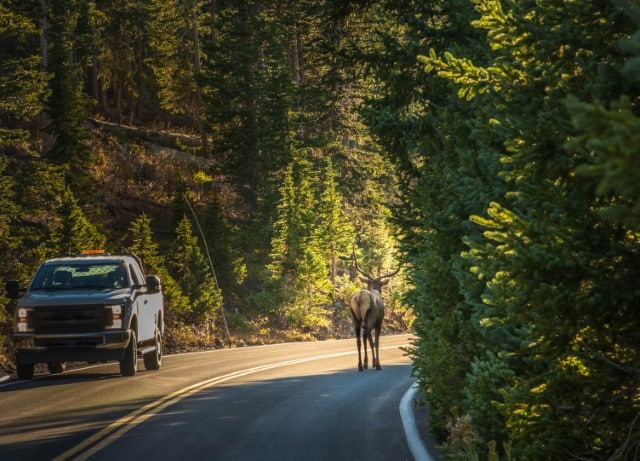
It is important to assess the impact of the collision and, if possible, the severity of the injuries.
But don’t approach too closely to the deer. An injured animal can be dangerous. Male deer are especially aggressive, especially if they feel they need to defend themselves.
Look for Signs
If there is a puncture to the deer’s skin, there will be blood either on the road or at the location where the deer ran away after being struck by your vehicle. It may be hard to spot, but you can often find blood on the foliage entering the forest or on leaves they have brushed against while running off.
Finding fur can also be a sign that the deer was injured, as the fur will often be torn or matted.
This can help to identify if it is worth stopping and reporting the incident, as well as provide evidence should a claim with insurance be necessary.
If the deer is still within your sight after the incident, you should pay attention to how it walks or how it is standing, as this can give you an idea of whether or not there are any bone breaks or puncture wounds.
Reporting animal injuries to local animal and wildlife authorities is the right thing to do.
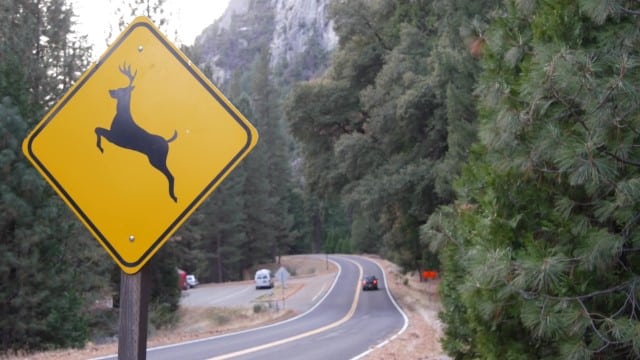
If the deer is deceased, it may still be a good idea to call animal response services. Some states make it illegal to interact with or harvest a dead deer.
This will depend on the laws of your local state. If you aren’t sure, contact local authorities and ask what to do.
Deer can often be relocated and treated for any minor injuries, and this can help maintain healthy populations of deer. In most cases, reporting a deer accident can also help the police apply necessary signage to the road (if it isn’t there already).
Final Thoughts: Is It Illegal to Hit a Deer and Drive Off?
While driving off isn’t illegal in many situations, it’s the wrong thing to do in many situations. Staying at the site of the incident, even if you’re not required to in your state, will protect you from any potential legal repercussions and other consequences.
Stay aware of your surroundings at all times and take mental note if you see any deer crossing signs. These are a warning that you should drive more slowly and carefully. Keep in mind the potential that a deer could suddenly run into your vehicle, or appear in the road.
Make sure you learn about the laws governing what you should do in the event of a deer collision in your state. It is your responsibility.

